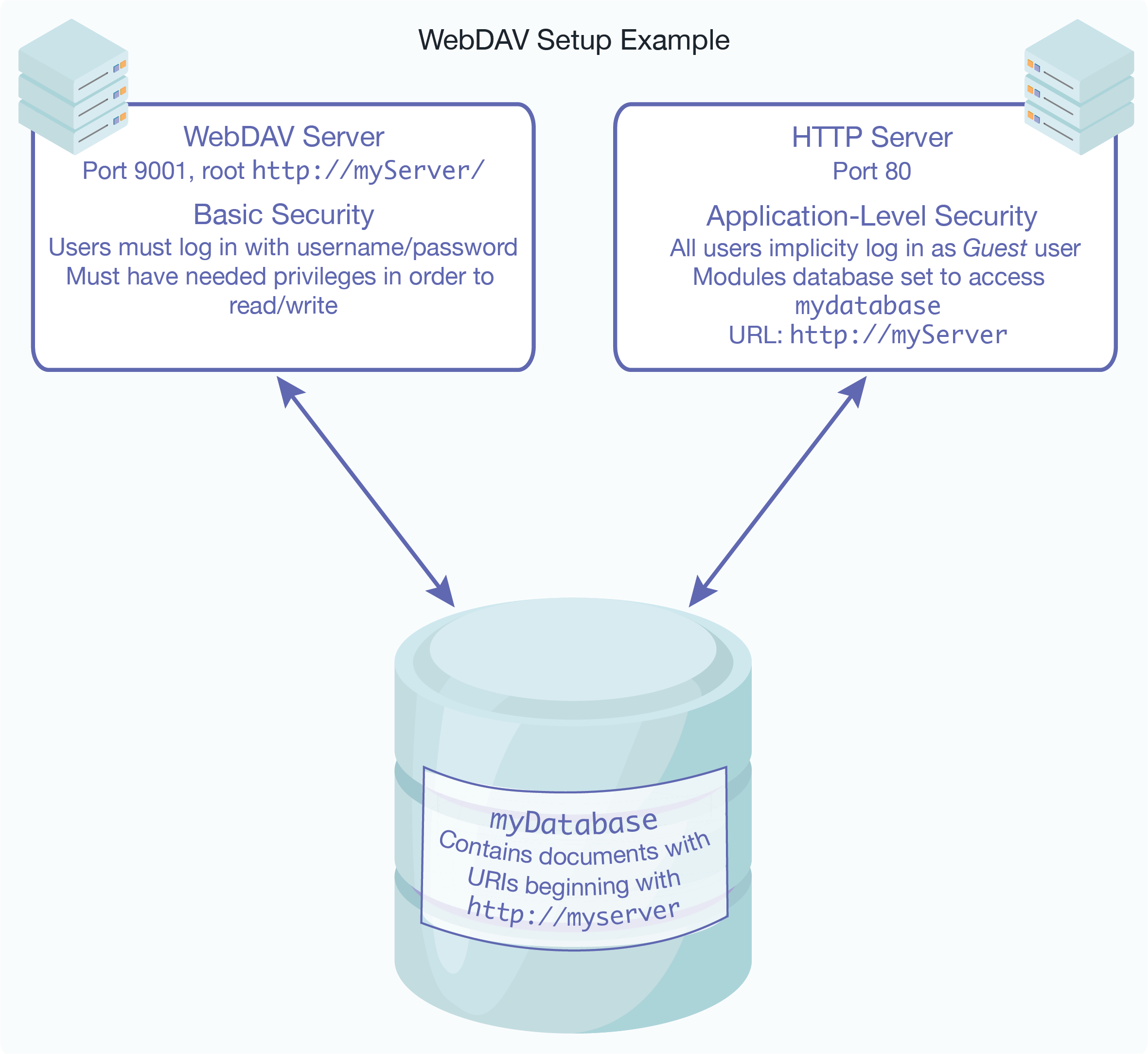Example: Setting Up a WebDAV Server to Add or Modify Documents Used by Another Server
You can use a WebDAV server to provide privileged users write access to a database (via a WebDAV client). That database, in turn, might also be used as a Modules database in one or more other servers (HTTP, ODBC,WebDAV, and/or XDBC) to provide read and execute access. Consider the scenario shown in the following figure:

In this scenario, all users can view the content by going to the URL http://myServer/ in their web browsers. No password is needed to access this server because it is set up with application-level security, using a default user named Guest. The Guest user only has read permissions. If there is content that you do not want the Guest user to access, load that content with privileges that the Guest user does not have.
Meanwhile, users with the proper privileges can log in through a WebDAV client to access the WebDAV server at port 9001. Because the WebDAV server is configured with basic security, users are prompted for a username and password when they access the server through the WebDAV client (or through a web browser connected to port 9001). From the WebDAV client, they can add documents, edit documents, or read documents according to the database security policy.
For information about a Modules database, see Modules Database.